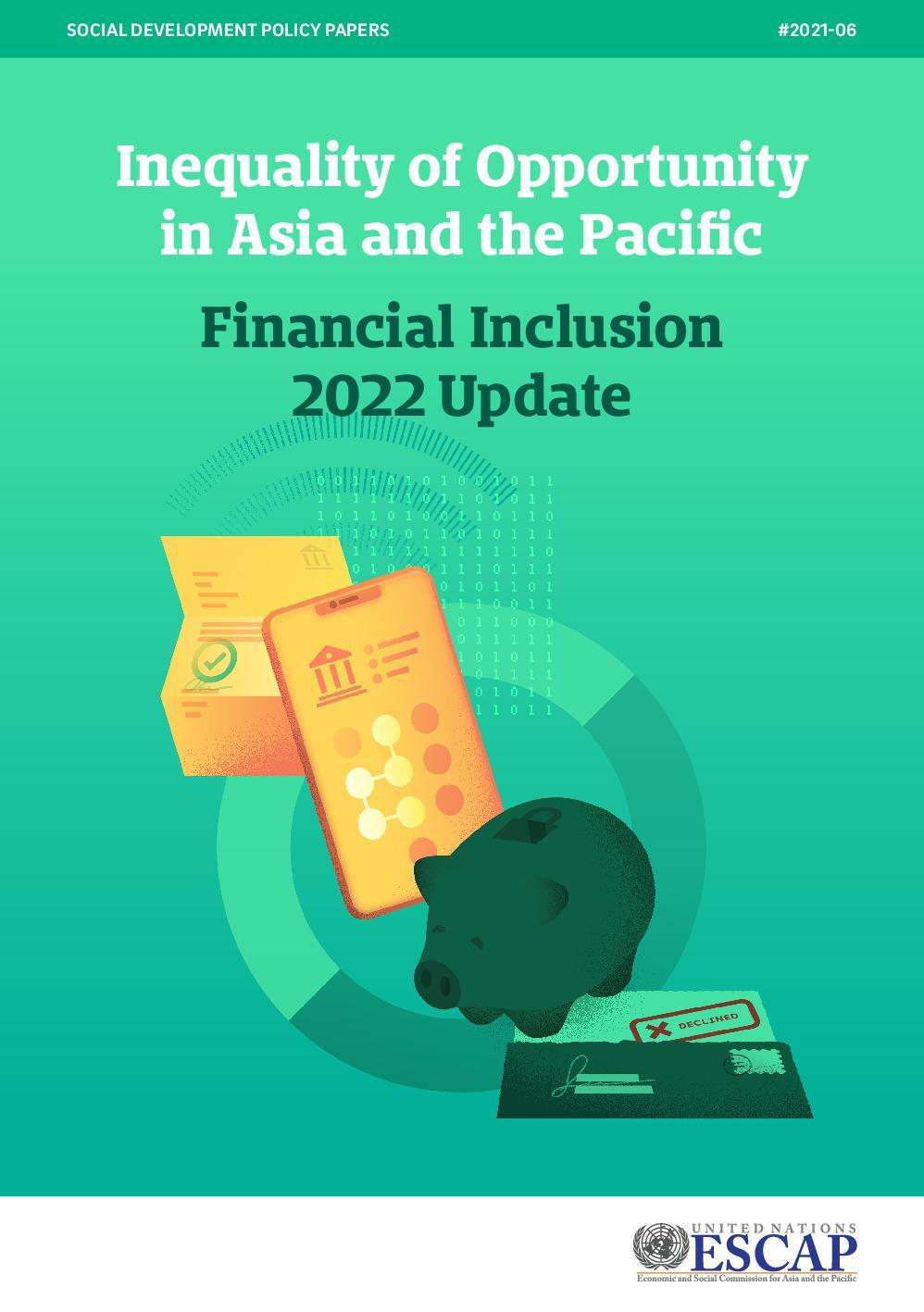Inequality of opportunity on Asia and the Pacific : financial inclusion 2022 update
Publication Date
2022-04-01
Country/Region
Asia and the Pacific
Category
Inequality
The ESCAP nequality of Opportunity papers place men and women at the heart of sustainable and inclusive development. They do so by identifying areas where inequality jeopardizes a person’s prospects, namely: education; women’s access to sexual and reproductive health care; children’s nutrition; decent work; basic water and sanitation; access to clean energy; and financial inclusion. Each of these opportunities is covered by specific commitments outlined in the 2030 Agenda for Sustainable Development and addressed in separate thematic reports covering 27 countries throughout Asia and the Pacific. ESCAP first discussed inequality of opportunity in its 2015 report Time for Equality, establishing the distinction between inequality of outcome and inequality of opportunity. While the former depicts the consequences of unequally distributed income and wealth, the latter is concerned with access to key services necessary to fulfil one’s basic rights.The Inequality of Opportunity papers apply a novel approach to analysing household surveys with the aim of identifying the groups of individuals with the lowest access to the above-referenced opportunities. These groups are defined by common circumstances over which the individual has no direct control, such as their wealth, place of residence and education level, amongst others. In addition to identifying the furthest behind, the Inequality of Opportunity papers also explore the gaps between groups in accessing these key opportunities, as well as the extent to which these have narrowed or widened over time. They also review overall inequality trends in these opportunities. Ultimately, these findings are of direct use for generating discussion on transformations needed to reach the “furthest behind first” as pledged in the 2030 Agenda for Sustainable Development.


